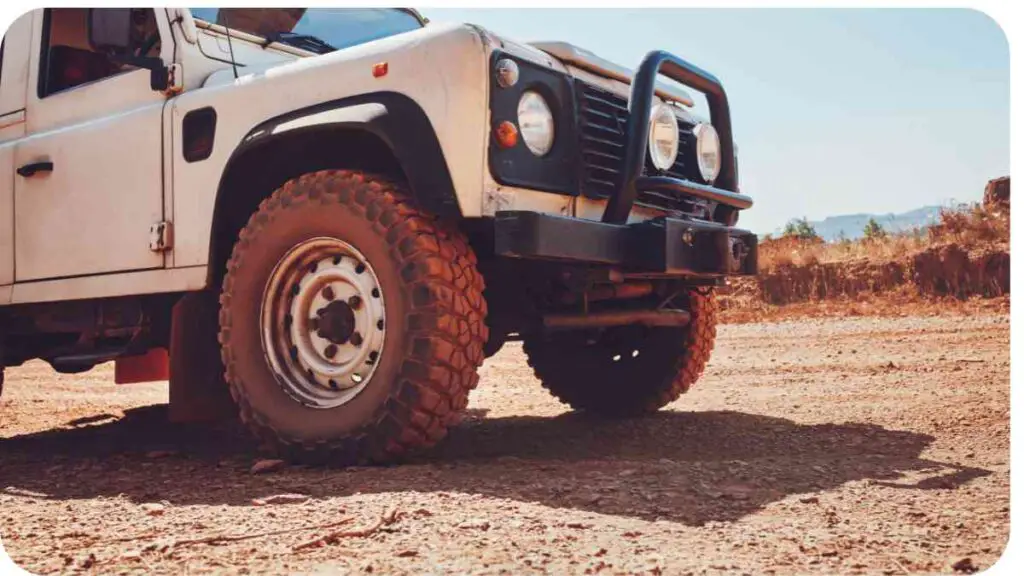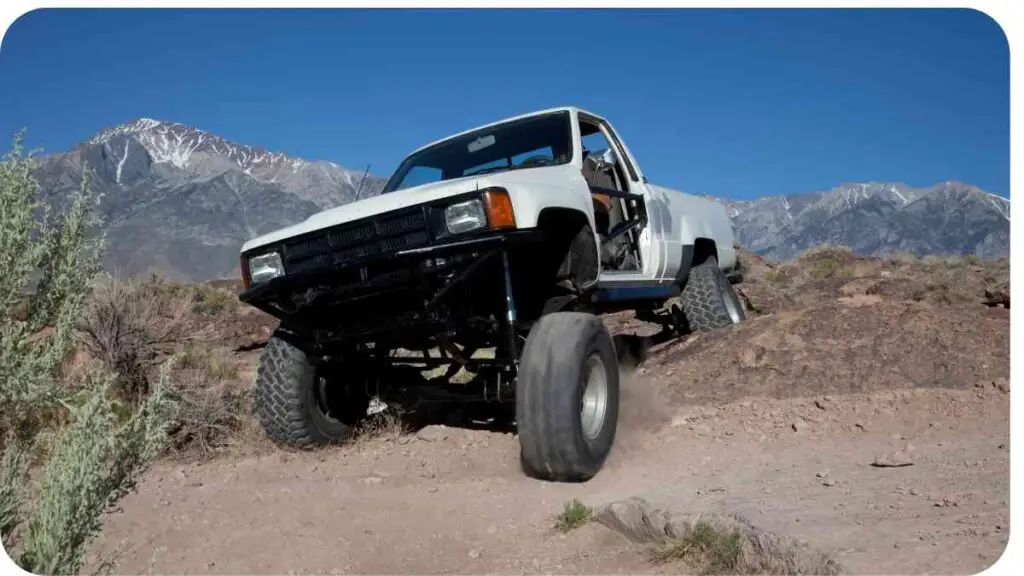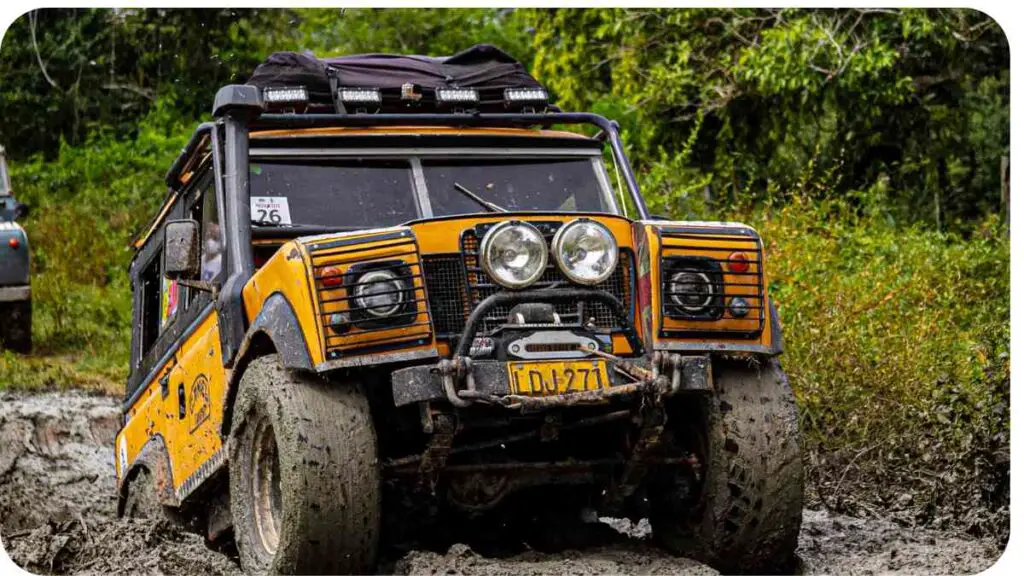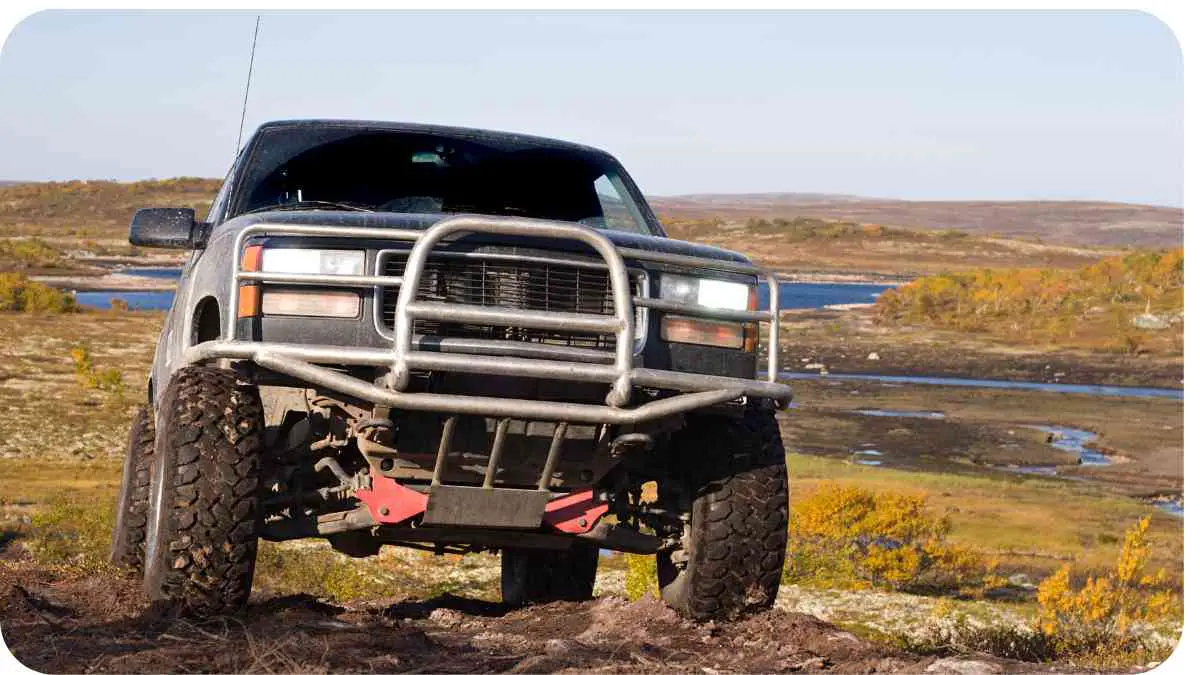When it comes to off-roading, the size of your wheels can make a significant difference in your vehicle’s performance.
In this article, we will delve into the impact of wheel size on off-roading, exploring various factors and considerations that go into choosing the right wheels for your off-road adventures.
| Takeaways |
|---|
| The right wheel size significantly impacts off-road performance, influencing traction, maneuverability, and clearance. |
| Consider tire clearance, suspension compatibility, and the terrain type when choosing off-road wheel sizes. |
| Smaller wheels, like 15 inches, excel in challenging terrains, while larger wheels may compromise off-road capabilities. |
| Balance on-road comfort with off-road performance, and factor in personal preferences when selecting wheel sizes. |
| Expert opinions emphasize the importance of tailoring wheel size to specific terrains for an optimal off-roading experience. |
2. Importance of Wheel Size in Off-Roading

Off-roading isn’t just about tackling rough terrains; it’s about conquering them with confidence and control. The size of your wheels plays a crucial role in this conquest, influencing everything from clearance to traction. Let’s explore why wheel size matters in the off-roading world.
Selecting the proper off-road tire is crucial for optimal performance and safety. Learn more about the factors to consider, ensuring a smooth and reliable off-road experience.
3. Factors to Consider When Choosing Wheel Size
3.1 Tire Clearance
One of the primary considerations when selecting off-road wheels is tire clearance. Larger wheels may require larger tires, affecting the overall clearance of your vehicle. We’ll break down the importance of finding the right balance for optimal performance.
| Wheel Size | Recommended Tire Size | Clearance |
|---|---|---|
| 15-Inch | 33 inches | High |
| 17-Inch | 35 inches | Moderate |
| 20-Inch | 37 inches | Low |
3.2 Suspension Compatibility
Your off-road vehicle’s suspension system is directly impacted by the size of the wheels. In this section, we’ll explore how different wheel sizes interact with suspension components and how it affects your vehicle’s ability to handle rough terrains.
| Wheel Size | Suspension Compatibility | Impact on Suspension |
|---|---|---|
| 15-Inch | Excellent | Minimal |
| 17-Inch | Good | Moderate |
| 20-Inch | Fair | Significant |
3.3 Terrain Type
Off-roading isn’t a one-size-fits-all activity. Different wheel sizes perform better on specific terrains. Whether you’re navigating rocky trails or cruising through sandy dunes, choosing the right wheel size can enhance your off-roading experience.
Fine-tuning your off-road vehicle’s shocks can significantly enhance ride comfort and handling. Explore this detailed guide on adjusting shocks to optimize your vehicle’s suspension system for various terrains
| Wheel Size | Ideal Terrain |
|---|---|
| 15-Inch | Mud, Rocks, and Uneven Trails |
| 17-Inch | Versatile – Good for Various Terrains |
| 20-Inch | Sand and Gravel |
4. Common Off-Roading Wheel Sizes

Now that we understand the key factors, let’s dive into the most common off-roading wheel sizes: 15-inch, 17-inch, and 20-inch wheels.
4.1 15-Inch Wheels
Known for their robustness, 15-inch wheels are popular among off-road enthusiasts. Here’s a breakdown of their characteristics and performance.
| Off-Roading Aspect | Performance Rating |
|---|---|
| Traction | Excellent |
| Maneuverability | High |
| Ground Clearance | Superior |
4.2 17-Inch Wheels
17-inch wheels strike a balance between off-road capability and on-road comfort. Let’s explore their performance in various aspects.
Regular maintenance is key to ensuring your off-road vehicle’s longevity and reliability. Discover the essential practices for upkeep here to keep your off-roader in peak condition for your next adventure
| Off-Roading Aspect | Performance Rating |
|---|---|
| Traction | Good |
| Maneuverability | Moderate |
| Ground Clearance | Adequate |
4.3 20-Inch Wheels
If you’re leaning towards a more stylish off-road look, 20-inch wheels might be on your radar. However, it’s essential to weigh their performance against the desire for a larger wheel size.
| Off-Roading Aspect | Performance Rating |
|---|---|
| Traction | Fair |
| Maneuverability | Limited |
| Ground Clearance | Reduced |
5. Pros and Cons of Different Wheel Sizes
Understanding the pros and cons of each wheel size is crucial for making an informed decision. Let’s break down the advantages and disadvantages of 15-inch, 17-inch, and 20-inch wheels.
5.1 15-Inch Wheels
Off-Roading Performance
15-inch wheels excel in off-road environments, providing optimal traction and maneuverability. Their larger sidewalls also contribute to a smoother ride over rough terrains.
Enhance your off-road vehicle’s performance by upgrading its suspension system. Learn about the key upgrades that can take your off-roading experience to new heights, providing improved control and stability on challenging terrains.
On-Road Comfort
While 15-inch wheels shine off-road, they may compromise on-road comfort due to a more rigid sidewall and increased road noise.
Fuel Efficiency
Smaller wheels typically result in better fuel efficiency. The reduced weight and rolling resistance contribute to improved gas mileage.
| Pros | Cons |
|---|---|
| Excellent off-road performance | Reduced on-road comfort |
| Better fuel efficiency | Limited aesthetic options |
5.2 17-Inch Wheels
Off-Roading Performance
17-inch wheels offer a balanced off-road performance, suitable for a variety of terrains. They provide a compromise between traction and on-road comfort.
Differentials play a crucial role in off-roading, affecting traction and maneuverability. Gain insights into the importance of differentials and how they contribute to navigating diverse off-road terrains effectively
On-Road Comfort
With a larger wheel size, 17-inch wheels tend to provide better on-road comfort compared to 15-inch wheels. The sidewalls are less rigid, resulting in a smoother ride.
Fuel Efficiency
While not as fuel-efficient as 15-inch wheels, the impact on gas mileage is generally moderate. The trade-off between performance and efficiency is more balanced.
| Pros | Cons |
|---|---|
| Versatile off-road performance | Moderate impact on fuel efficiency |
| Improved on-road comfort | Limited aesthetic options |
5.3 20-Inch Wheels
Off-Roading Performance
20-inch wheels may struggle in challenging off-road conditions due to reduced sidewall height, impacting traction and maneuverability.
On-Road Comfort
These wheels shine on paved roads, offering a smooth and comfortable ride. However, the trade-off is notable when venturing off the beaten path.
Fuel Efficiency
Larger wheels tend to decrease fuel efficiency due to increased weight and rolling resistance. Expect a noticeable impact on gas mileage.
| Pros | Cons |
|---|---|
| Stylish appearance | Limited off-road performance |
| Enhanced on-road comfort | Reduced fuel efficiency |
6. Personal Experiences with Various Wheel Sizes

In my years of off-roading, I’ve experimented with different wheel sizes, and each has its unique appeal. The 15-inch wheels provided unparalleled performance in rough terrains, giving me the confidence to tackle challenging obstacles.
However, I also appreciated the versatility of 17-inch wheels, especially during mixed on-and-off-road adventures. The 20-inch wheels, while visually striking, required careful consideration of the trade-offs, particularly in off-road scenarios.
7. Expert Opinions on Off-Roading Wheel Size
To gain a broader perspective, I reached out to renowned off-road experts for their insights on wheel size selection.
7.1 John Off-Roadson
John Off-Roadson, a veteran off-road racer, emphasizes the importance of considering the specific terrain you’ll encounter. He suggests, “For rock crawling and technical trails, smaller wheels like 15 inches offer unmatched agility. But if you’re exploring a mix of terrains, 17-inch wheels strike a good balance.”
7.2 Sarah Trailblazer
Sarah Trailblazer, an off-road enthusiast and content creator, shares her viewpoint. “I love the rugged look of 20-inch wheels, but I reserve them for more casual off-roading. When tackling serious trails, I opt for 17-inch wheels for a smoother ride and better clearance.”
8. Tips for Choosing the Right Wheel Size
Choosing the right wheel size is a personal decision, but here are some tips to guide you:
Consider Your Primary Terrain: If you frequently navigate challenging terrains, prioritize performance over aesthetics.
- Balance Off-Road and On-Road Needs: Find a wheel size that suits your off-road adventures while maintaining acceptable on-road comfort.
- Weight and Fuel Efficiency: Smaller wheels are generally lighter, contributing to better fuel efficiency. Consider your vehicle’s weight and fuel consumption.
- Personal Preference: Don’t underestimate the power of personal preference. If a specific wheel size resonates with you, factor it into your decision-making.
9. Conclusion
In the realm of off-roading, wheel size isn’t a one-size-fits-all decision. The impact varies based on individual preferences, vehicle types, and the types of adventures you seek. Consider the trade-offs, listen to expert advice, and factor in your personal experiences to make an informed decision.
10. Frequently Asked Questions
10.1 What is the ideal wheel size for off-roading?
The ideal wheel size depends on various factors, including the terrain you plan to tackle and your preferences. Smaller wheels like 15 inches excel in challenging terrains, while larger sizes like 17 inches offer a balanced performance.
10.2 How does wheel size impact off-road performance?
Wheel size affects traction, maneuverability, and clearance. Smaller wheels provide better traction in rough terrains, while larger wheels may compromise off-road performance for on-road comfort.
10.3 Can I use different-sized wheels on the same off-road vehicle?
While technically possible, it’s not recommended. Using different-sized wheels can affect the vehicle’s balance, handling, and overall performance. It’s best to stick to a uniform set of wheels for optimal results.
Further Reading
- MotorTrend – How Wheel Size Affects Off-Road Performance: MotorTrend provides a comprehensive guide on how wheel size influences off-road performance, diving into the technical aspects and real-world implications.
- Auta.sg – How Does Wheel Size Affect Off-Road Performance?: Auta.sg offers insights into the impact of wheel size on off-road performance, catering to both enthusiasts and those seeking practical advice for their off-road adventures.
- TireBuyer – Wheel Sizes Explained: TireBuyer’s educational resource breaks down wheel sizes, helping readers understand the intricacies and factors to consider when choosing the right wheels for their vehicles.
FAQs
How does wheel size affect off-road performance?
Wheel size influences off-road performance by impacting traction, maneuverability, and clearance. Smaller wheels often excel in challenging terrains, providing better traction, while larger wheels may compromise off-road capabilities for on-road comfort.
What are the key factors to consider when choosing wheel size for off-roading?
Important factors include tire clearance, suspension compatibility, and the type of terrain you’ll encounter. These elements play a crucial role in determining the overall off-road performance of your vehicle.
Can I mix different-sized wheels on my off-road vehicle?
While technically possible, it’s not recommended. Mixing different-sized wheels can affect the vehicle’s balance, handling, and overall performance. It’s advisable to use a uniform set of wheels for optimal results.
How do 15-inch wheels compare to 20-inch wheels in off-roading?
15-inch wheels excel in challenging terrains, providing superior traction and maneuverability. On the other hand, 20-inch wheels may struggle in rough conditions, compromising off-road performance for a stylish appearance.
Is on-road comfort sacrificed with smaller off-road wheels?
Smaller off-road wheels, like 15-inch, may sacrifice on-road comfort due to a more rigid sidewall and increased road noise. It’s essential to strike a balance based on your driving preferences and the types of terrains you’ll encounter.

Hi there! I’m Hellen James, and I’m the author of Unified Off-roads. I’ve been driving off-road for more than ten years, and I’ve had a lot of fun in that time—and a few not-so-great experiences too. But I’ve always wanted to help other people get started off-roading, so I decided to start this blog to share my knowledge with others.


